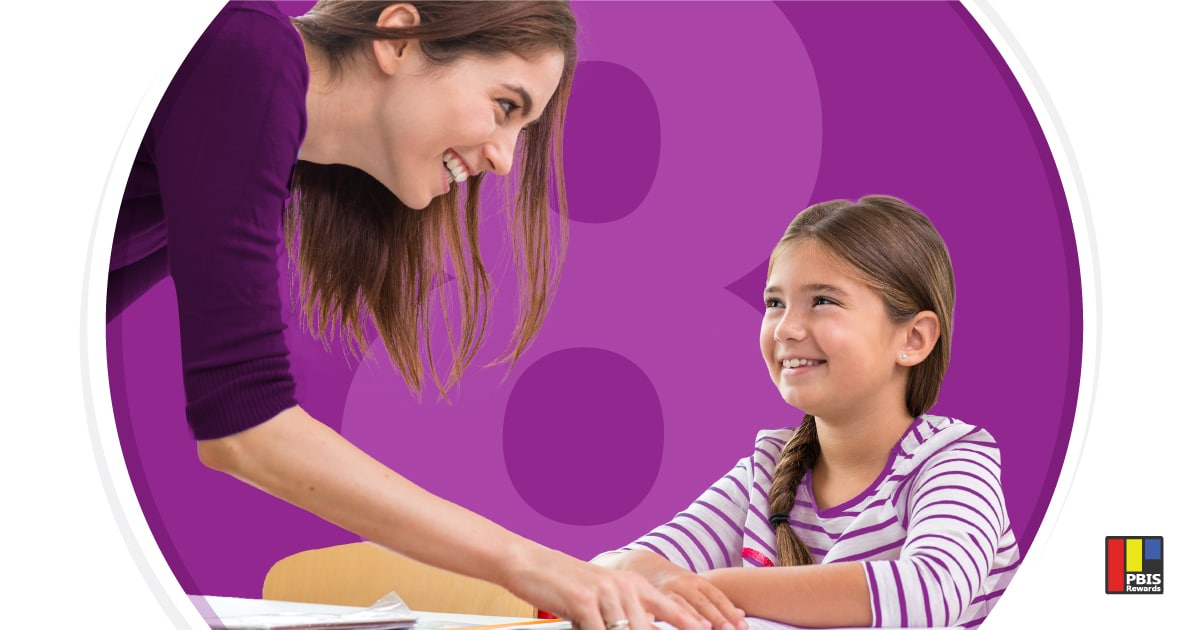Building relationships with students is the backbone of positive school culture. How your students interact with you, with other school staff, and with each other is directly related to the tone you set in your classroom. Building relationships with students can reap a host of benefits, including better classroom routines and more time to teach.
But what’s the best way to build a teacher-student relationship?
Building Relationships with Students: 8 Ways to Connect
1. HELLO/GOODBYE
Never underestimate the impact of a simple, daily “Hello” and “Have a great day” can have on each student. It might feel like speaking to every student will take a great deal of time, and it might be tempting to send a quick email during classroom changes. But students remember adults who take the time to give them a smile and a kind word each day. Could there be a better reason to invest those few minutes?
2. BEGIN WITH THE END IN MIND
A positive classroom environment can foster significant relationships for everyone. Begin by establishing classroom expectations that are rooted in schoolwide expectations. These standards can help to protect student self-esteem and enable them to do great things. Take the time to teach, model, practice, and praise those highly-valued behaviors and re-teach when you see a need.
3. WHAT’S ON THEIR PLAYLIST?
Don’t underestimate the power of knowing a student’s favorite music group, breakfast cereal, or novel. While you may not be able to remember each detail, this information can help foster personal connections with a student. Take a little time to collect a student letter or questionnaire to learn these small details. This information can help you to make that connection and help you to see what your students may have in common. These specific details often make students memorable, even long after they’re out of your classroom.
4. SEL
There’s a common saying that acknowledges that if students can’t read, we teach them. If students can’t add, we teach them. But if students demonstrate inappropriate behavior, do we teach them? Social and emotional learning in the classroom can help to answer that question. Preparing students to practice self-awareness, self-management, social awareness, relationship skills, and responsible decision-making will have lasting effects.
5. WALK & TALK
Speaking to students with respect can demonstrate that you are sincere about talking the talk and walking the walk. Emotions can get the better of us sometimes, but establishing a culture of respect is crucial to building relationships with students. In the most trying of times, you, as the adult, must interact with students in the manner you have established. Modeling respect is key.
6. GIVE THEM A VOICE
Invest in your students, both individually and as a group, by giving them the time and space to share their struggles and successes. Never underestimate what it can mean to give your students a time to share what is going on in their life. This goes both ways – share what is going on in your life, as well. This action can change the way you view your students, and it can help your students to see one another as individuals.
7. GOOD CALL
For some parents, the only communication they receive from school is negative, particularly if their child is struggling. This kind of contact can create a loop of negativity, which doesn’t serve anyone very well. However, parents who receive positive feedback from teachers feel they have an ally at school. If they feel the teacher sees the good qualities of their child, they may be more comfortable reaching out to that teacher when they have concerns. This communication between parent and teacher benefits the student in many ways. So attach that comment, send that message, or make that phone call!
8. A LISTENING EAR
There is nothing quite like the power of a listening ear. Sometimes your students just need to tell you something, just to get it out of their head. They may not expect or even want help or advice. A private joy, an embarrassing concern, a personal triumph, a secret worry – whatever it is, listening to your students without judgement can build strong relationships. Of course, there may be times you may need to get more deeply involved, but offering up a listening ear to your students can be just what they need.
The Benefits of Connection
Building relationships with students is one of the most critical aspects of teaching. Everything flows from this relationship. The trust and cooperation earned from positive connection with your students will play out in every aspect of your school day. This connection can lead to efficient classroom routines, greater student confidence, and increased academic achievement. Though a series of small, thoughtful, intentional gestures, you can build positive relationships with your students. For some, this may be the only positive interaction they have with adults each day. Your students want to know that you care for them – building relationships with students will help them to know that you do!


